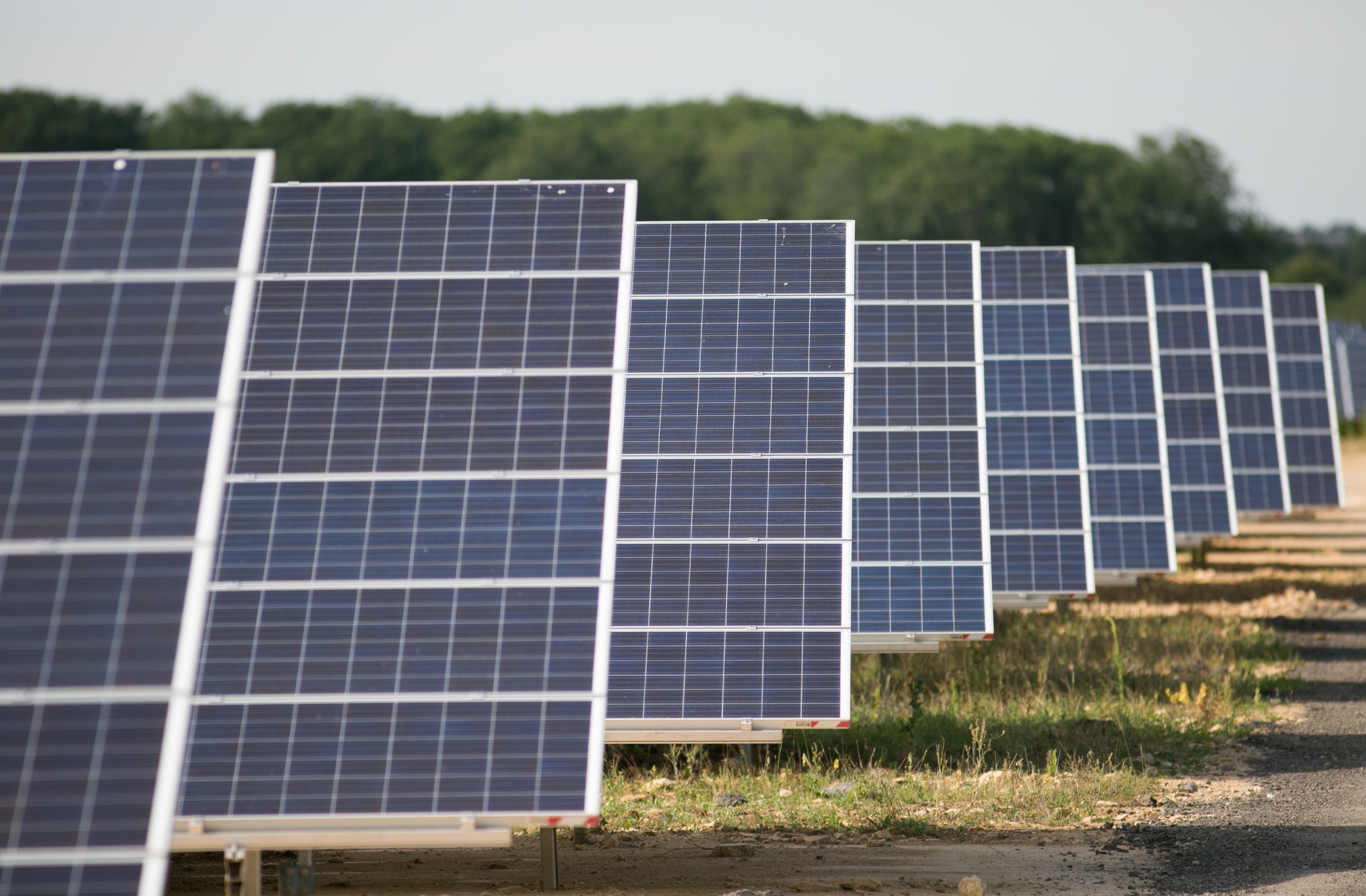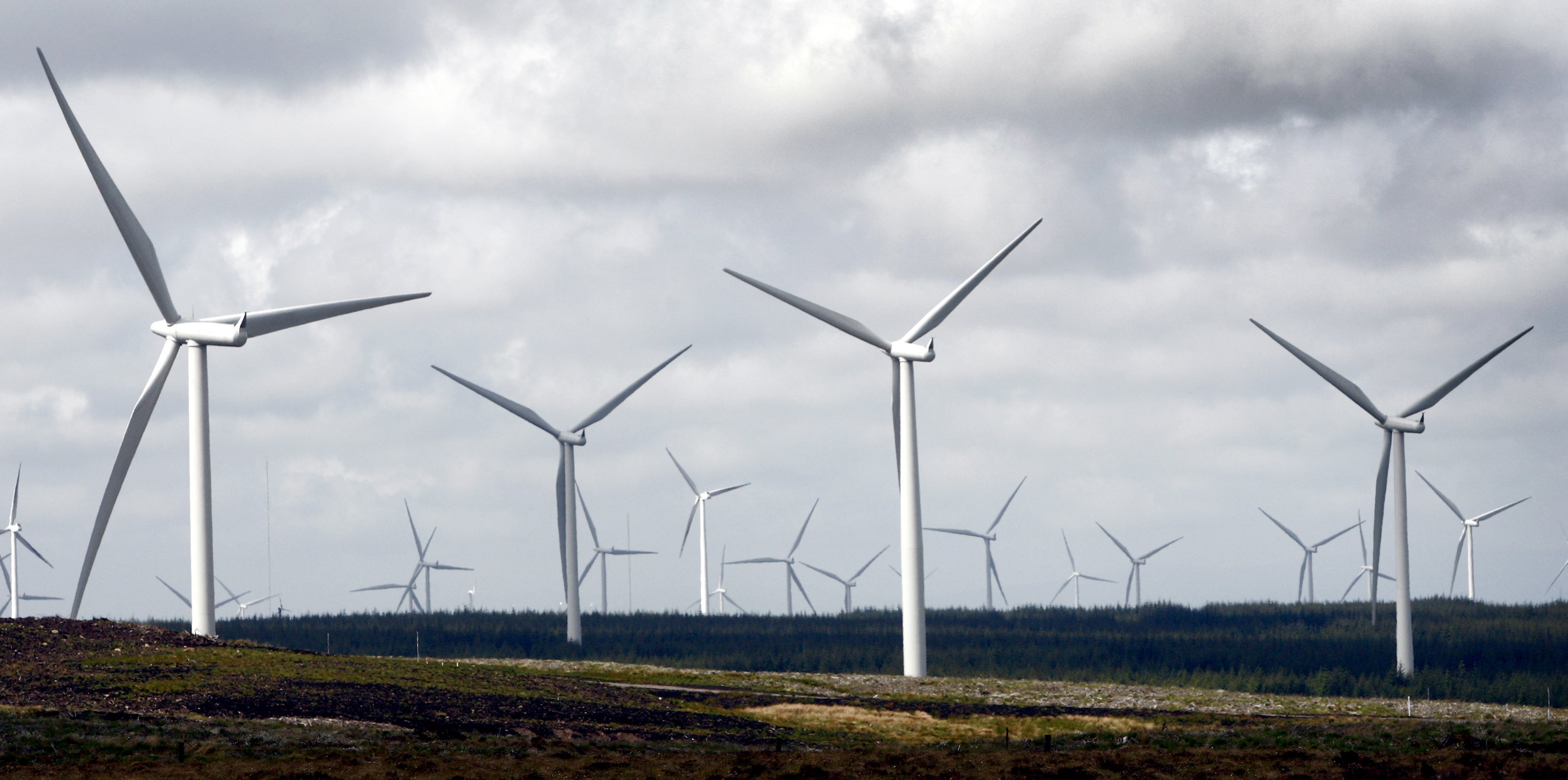
Some wind and solar farms are benefiting from sky-high electricity prices, which are driven by the record price of gas.
Because much of the UK’s electricity comes from gas-burning power plants, British electricity prices tend to track the price of gas.
But why is this, how does it work, and what are the solutions?
– How does it work?
The structure of the wholesale energy market means that the price of electricity is determined by the generator who successfully bids the highest price, not the lowest bidder.

In a fictional and highly simplified scenario: Britain tomorrow needs 10 gigawatts (GW) of electricity generation running to meet demand. A wind farm says that it can produce 5 GW at £100 per megawatt hour (MWh). Then a big gas power plant promises to produce 4.9 GW at £110 per MWh.
But there is still 0.1 GW needed. So a small gas plant fires up and says that it will produce the last little bit at £200 per MWh.
Because of the way the system works, everybody else – the wind generator and the other gas generator – will also be paid £200 per MWh, even though they could happily take less money.
– Can electricity prices be set by generation other than gas?
Yes, this is possible. But even in normal times the price of electricity is often set by the cost of fossil fuels. This is mostly gas, but could also be diesel or coal.
According to a 2022 study from researchers at University College London and Imperial College London among others, in 2019 the cost of electricity was set by fossil fuels 84% of the time, and only 1% of the time by the cost of renewables.
The remaining 15% of the price was set by electricity imports from Europe that year, which would make up generation shortfalls sometimes.
– What is the problem?
The system was created when wind and solar prices were high and gas prices were low, so has proven problematic after the price of gas soared.
It creates an odd situation where some wind and solar farms are getting paid a lot more than they need to be to break even.

The older renewables get paid the high electricity price, which is linked to gas, and on top of that are given a fixed subsidy for every MWh they produce. They are on the so-called Renewable Obligation scheme.
“We have the unseemly situation where the cost-efficiency of renewables is not being passed on to wholesale prices or consumers,” Michael Liebreich, an energy expert and chief executive of Liebreich Associates, wrote in an online post recently.
For more recently built wind farms, this is not really a problem. A lot of the wind farms built since 2015 are part of the Contracts for Difference (CfD) scheme.
Under these contracts, the generators are guaranteed a certain price – say £100 per MWh, though it is different for different projects – for the electricity they produce.
If they get paid less than this then they get a top-up from energy bills, if they get paid £130 then they return £30 to bill payers.
This will feed through to household energy bills this winter. The October price cap, at a record £3,549, would have been £23 higher if not for these payments being returned.
But only around 10 GW of wind and solar generation in Britain are sold under the CfD scheme, while 32 GW of renewables are sold under the older Renewable Obligation system, where they get to keep the extra money.
– What are the solutions?
Experts say there are a few different solutions to the problem, each with their benefits and drawbacks.
Unsurprisingly, many are calling for a windfall tax on electricity producers, like the one that was slapped on oil and gas producers back in May.
This would ensure that these older wind and solar farms are not benefiting from the higher price of gas. Some argue that it could reduce investment in much-needed renewables.

However, Jonathan Marshall, an expert at the Resolution Foundation, said it was unlikely to scare investors off from lucrative Contracts for Difference deals.
“Everyone is desperate to win the CfD contracts for the new stuff, so if you tax them for the old stuff they’re not going to stop trying to do it,” he said.
There are also different solutions, he added. One would be to force all of the old renewables to switch on to CfD contracts. This would cut their excess profits, but also protect them in the future if energy prices start to fall again.
On Thursday the trade body for the industry, Energy UK, threw its weight behind this plan.
The final solution is to split the energy market into two pools, one with green energy and one with fossil fuel energy. This would separate the price of the two types.
Many experts have called for this to happen, including Mr Liebreich, but it would take time to introduce.
“It’s really complicated, if you start tinkering with it you don’t want to get it wrong,” Mr Marshall said.
“It seems pretty obvious what’s going to happen. There’ll be a green pool and a non-green pool, and they’ll be priced differently.”
But this cannot be in place in time to help people with bills and slash excess profits this winter, he said.
The three main solutions are not all mutually exclusive, and threats of a windfall tax might be used as the stick to push Renewable Obligation generators on to CfDs. Many say that the market should be split in the long term, regardless of other solutions.
“I think the most comprehensive way would be the green power pool. But that would also take the longest time. But it’s such an important issue, now, in particular, we’re seeing the effects of the high gas price goes on people’s electricity bills,” Jess Ralston, at the Energy and Climate Change Intelligence Unit, said.
“It just didn’t make sense anymore to have this system. Having the marginal price set by gas makes no sense where new renewables are so much cheaper, nine times cheaper.”







